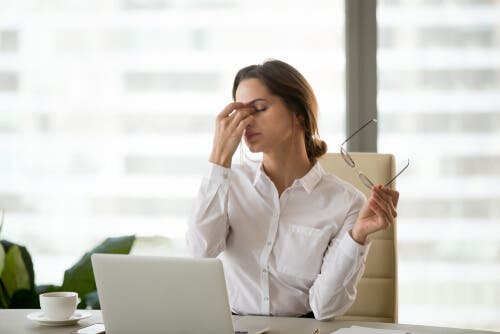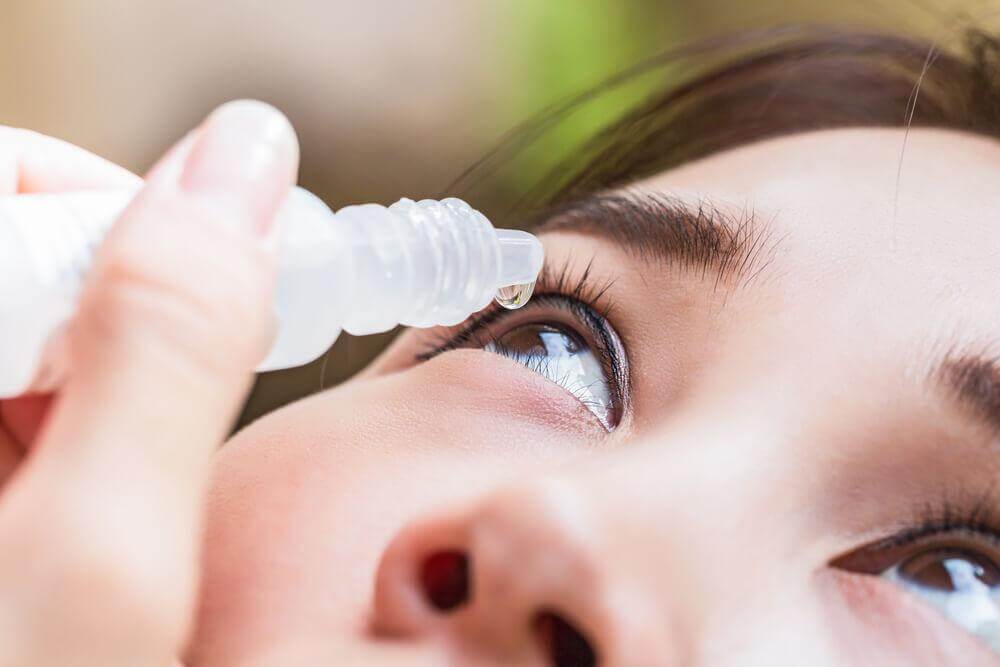Non-Invasive Ways to Protect Your Eyes from Blue Light

The evolution of technology has shifted our lifestyles, making gadgets an integral part of our daily routines. From the way we entertain ourselves, communicate with others, and get work done, gadgets are woven into the majority of our regular experiences. In the U.S. alone, the average adult spends over six hours on a screen every day.
However, along with these advancements, there has been a significant rise in the amount of blue light exposure. Blue light is emitted by electronic gadgets and screens like smartphones, TVs, tablets, and the like. Over time, blue light has been known to cause eye-related issues. This includes eye fatigue, dry eyes, blurry vision, headaches, as well as neck and back aches. According to a survey, around 65% of adults self-reported experiencing symptoms of digital eyestrain.
That said, since devices are a staple part of our daily lives, it is difficult to simply avoid using them for the sake of steering clear of blue light altogether. Instead, it’s much more practical to practice blue light safety tips. As such, below are some simple and non-invasive ways to protect the eyes from blue light.
Non-Invasive Ways to Protect Your Eyes from Blue Light Damage

We think you may also like to read this article: What Is Conjunctival Chemosis and How Does It Affect The Eyes?
Adjust your screen settings
To counteract the effects of blue light, adjustable screen settings offer a solution. One of the essential features that can be modified is brightness. By setting the screen brightness to an appropriate level, we can reduce the strain on the eyes. As a general guideline, screen brightness should match ambient lighting conditions. For example, dimming the screen in low-light environments prevents excessive contrast and relieves eye strain.
Another important screen setting to consider is color temperature, which refers to the warmth or coolness of the displayed colors. Adjusting the color temperature can play a significant role in reducing blue light exposure. Shifting the display to a warmer color temperature decreases the proportion of blue light emitted, leading to a more eye-friendly screen.
Take breaks from screen time
One of the most infamous effects of blue light is how it disrupts the circadian rhythm, which is essentially a person’s sleeping pattern. On top of this, blue light overexposure can cause eye irritations, dryness, and even swelling. It is essential, then, to take regular breaks from screens to prevent these symptoms from becoming chronic and affecting your overall well-being.
Among the most advisable ways to do this is to follow the 20-20-20 rule: every 20 minutes, take a 20-second break and focus on something at least 20 feet away. This practice helps to relax the eye muscles and reduces eye strain. Additionally, taking longer breaks from screen time throughout the day, such as during lunch breaks or after work, can largely help with minimizing exposure to blue light.
Like this article? You may also like: Do You Have Dark Circles Under Your Eyes? Hide Them Naturally!
Invest in blue light glasses to protect your eyes from blue light damage
In order to prevent blue light damage, some eyeglasses have been designed specifically to block or filter out blue light. These blue light glasses are equipped with specialized lenses that absorb and reflect a significant portion of the blue light, protecting eyes from potential harm. Case in point, OPSM has developed Crizal Prevencia, an advanced selective filter technology for blue light glasses. It smartly blocks blue-violet light while still allowing other visible light to pass through the lens. These types of lenses also offer additional benefits, such as UV protection, anti-glare properties, and scratch resistance.
One of the key advantages of these blue light glasses is their versatility and ease of use. They can be prescribed by an optometrist, as well as obtained over the counter without a prescription. Those who already require prescription glasses can also opt for lenses with built-in blue light filtering properties, eliminating the need for separate glasses.
Use eye drops

By creating a protective barrier on the surface of the eye, eye drops help block the penetration of blue light into the delicate ocular tissues. A key component found in these eye drops is a natural antioxidant called lutein. Lutein is a pigment found in the macula, the part of the eye responsible for central vision. It acts as a natural blue light filter and helps to neutralize free radicals, reducing oxidative stress on the eyes.
One of the direct benefits of using eye drops to protect our eyes from blue light is the potential alleviation of digital eye strain symptoms, including dryness, blurry vision, and headaches. Pharmaceutical companies like Rohto have developed Digi Eye Drops, which are specifically formulated to offer protection from blue light. By applying eye drops like these regularly, defense against blue light can be bolstered, minimizing the potential harm caused by prolonged exposure.
This text is provided for informational purposes only and does not replace consultation with a professional. If in doubt, consult your specialist.








